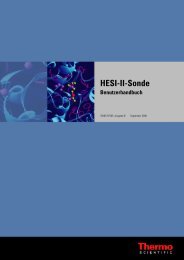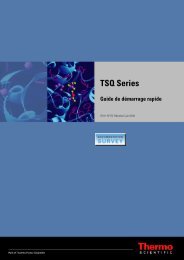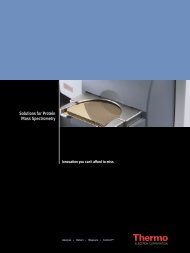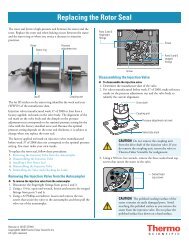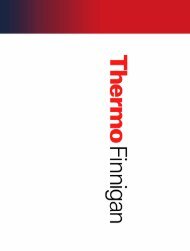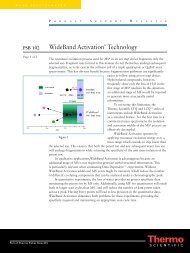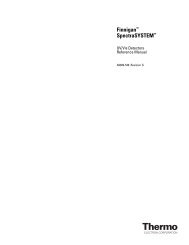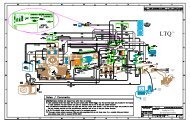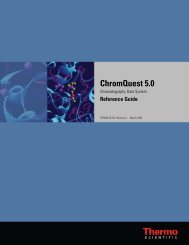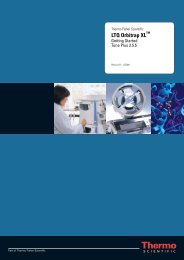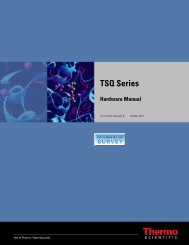SIEVE User Guide
SIEVE User Guide
SIEVE User Guide
Create successful ePaper yourself
Turn your PDF publications into a flip-book with our unique Google optimized e-Paper software.
A Understanding the ChromAlign Process<br />
Outlining the ChromAlign Process<br />
Outlining the ChromAlign Process<br />
Start with Original Chromatograms<br />
A and B<br />
Step 1<br />
Align chromatograms roughly using Fast<br />
Fourier Transform (FFT) algorithm<br />
Step 2<br />
Generate correlation matrix, (C (A, B))<br />
Step 3<br />
Create dynamic programming<br />
optimal path in C(A, B - ) and provide a<br />
final alignment<br />
After selecting samples and determining the control data set, send the<br />
control and sample chromatograms to be aligned with respect to the first<br />
control chromatogram.<br />
Step 1 of the ChromAlign process produces a crude alignment of the two<br />
chromatographic surfaces using a fast fourier transform algorithm to<br />
maximize the overlap of the chromatographic surfaces:<br />
FFT (A) (first control sample)<br />
FFT (B) (all other chromatograms)<br />
FFT -1 (FFT (B)xFFT (A)*)<br />
Crudely aligned, B -<br />
In step 2, <strong>SIEVE</strong> uses the full MS scan information to fully align all<br />
components (major as well as minor components of the samples) of the<br />
chromatographic surfaces. <strong>SIEVE</strong> uses dynamic programming to maximize<br />
the sum of all correlation co-efficients of peaks between time 0 and the end<br />
of the chromatogram.<br />
<strong>SIEVE</strong> completely aligns the chromatographic surfaces.<br />
28 <strong>SIEVE</strong> <strong>User</strong> <strong>Guide</strong> Thermo Fisher



